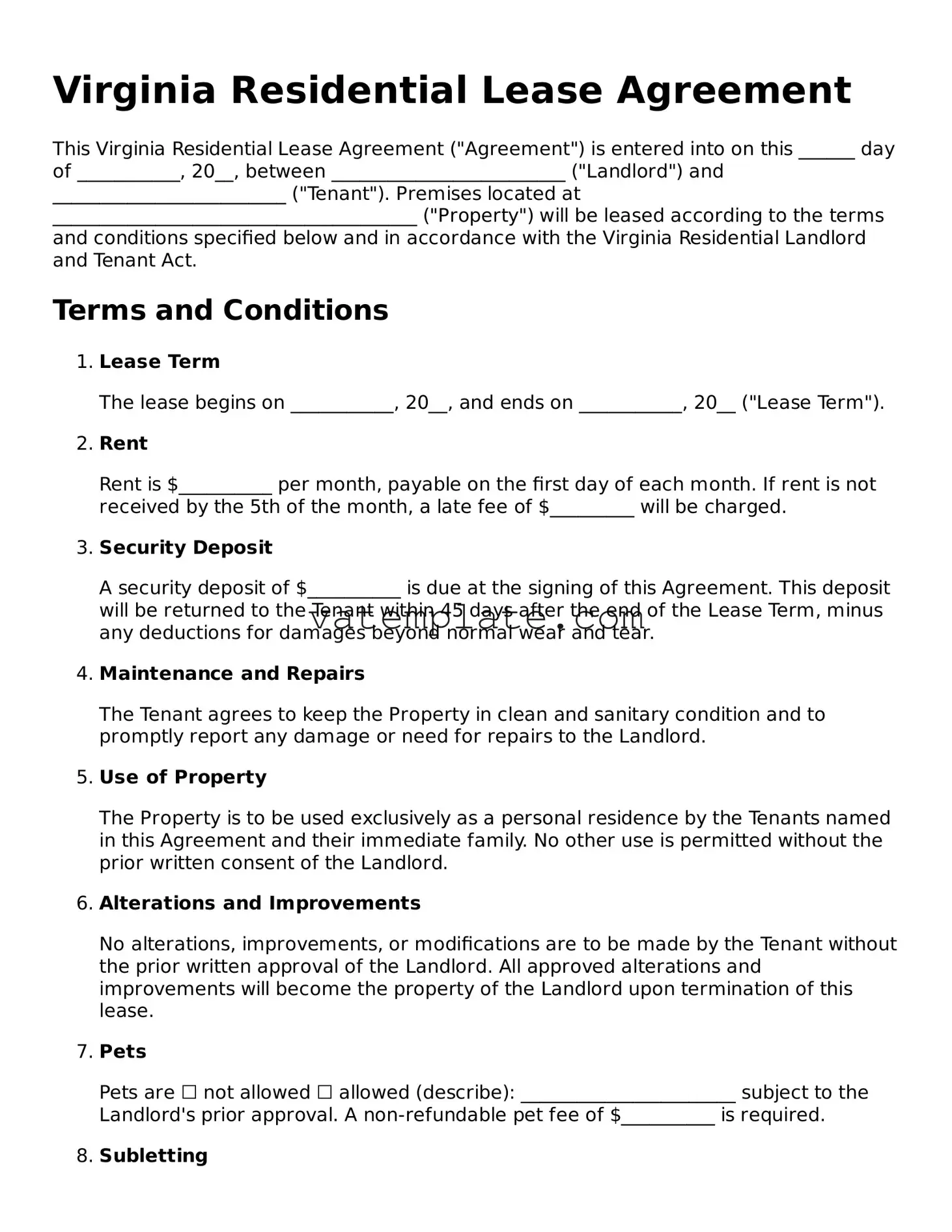Virginia Residential Lease Agreement
This Virginia Residential Lease Agreement ("Agreement") is entered into on this ______ day of ___________, 20__, between _________________________ ("Landlord") and _________________________ ("Tenant"). Premises located at _______________________________________ ("Property") will be leased according to the terms and conditions specified below and in accordance with the Virginia Residential Landlord and Tenant Act.
Terms and Conditions
- Lease Term
The lease begins on ___________, 20__, and ends on ___________, 20__ ("Lease Term").
- Rent
Rent is $__________ per month, payable on the first day of each month. If rent is not received by the 5th of the month, a late fee of $_________ will be charged.
- Security Deposit
A security deposit of $__________ is due at the signing of this Agreement. This deposit will be returned to the Tenant within 45 days after the end of the Lease Term, minus any deductions for damages beyond normal wear and tear.
- Maintenance and Repairs
The Tenant agrees to keep the Property in clean and sanitary condition and to promptly report any damage or need for repairs to the Landlord.
- Use of Property
The Property is to be used exclusively as a personal residence by the Tenants named in this Agreement and their immediate family. No other use is permitted without the prior written consent of the Landlord.
- Alterations and Improvements
No alterations, improvements, or modifications are to be made by the Tenant without the prior written approval of the Landlord. All approved alterations and improvements will become the property of the Landlord upon termination of this lease.
- Pets
Pets are ☐ not allowed ☐ allowed (describe): _______________________ subject to the Landlord's prior approval. A non-refundable pet fee of $__________ is required.
- Subletting
Subletting of the Property is not permitted without the Landlord's written consent.
- Default
If the Tenant fails to comply with any term of this Agreement, the Landlord may terminate the lease upon providing proper notice as required by Virginia state laws.
- Governing Law
This Agreement shall be governed by the laws of the State of Virginia.
- Entire Agreement
This document and any attached addenda constitute the entire agreement between the parties regarding the Property's lease, superseding all prior discussions and agreements.
Signatures
IN WITNESS WHEREOF, the parties have executed this Virginia Residential Lease Agreement on the date first above written.
Landlord's Signature: _________________________
Tenant's Signature: _________________________
